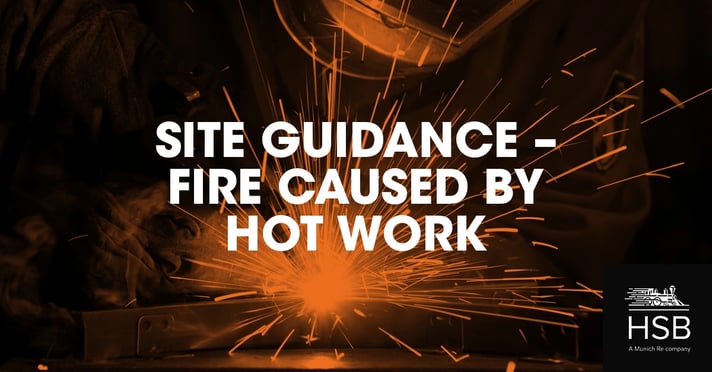Fire caused by hot works
Hot work is usually defined as any open flame, spark or heat producing activity and is typically associated with cutting, welding, grinding and brazing operations as part of maintenance or construction works.
Hot work can generate sparks, molten material and other ignition sources well away from the area of work. In addition, conducted heat can cause ignition of combustible materials both locally and remotely. Ideally hot work should not be carried out and alternative methods of work should be investigated.
Hot work has been recognised as a significant fire risk for many years. Despite this, loss statistics show us that it continues to be a major cause of loss within industrial and commercial facilities, particularly during maintenance periods and construction projects. It is essential that all hot work activities are properly managed.
To access the full guidance from HSB, download a copy of the document here.
About HSB
HSB’s specialist underwriting in the UK and Ireland covers a broad range of risks including construction, cyber, computer, equipment breakdown and energy efficiency.
Built on a foundation of specialist insurance, engineering and technology, HSB is a global provider with over 150 years of technical risk knowledge and experience that sets the standard for excellence worldwide. Part of Munich Re, HSB is rated A++ (Superior) by A.M. Best Company.
Further information can be found at: www.hsbeil.com
Disclaimer:
*The guidance in this document refers to industry best practice loss control advice. Adoption of the advice contained within this document does not imply compliance with industry, statutory or HSB guidelines, nor does it guarantee that losses will not occur.
For more information, please contact us.


Have your say